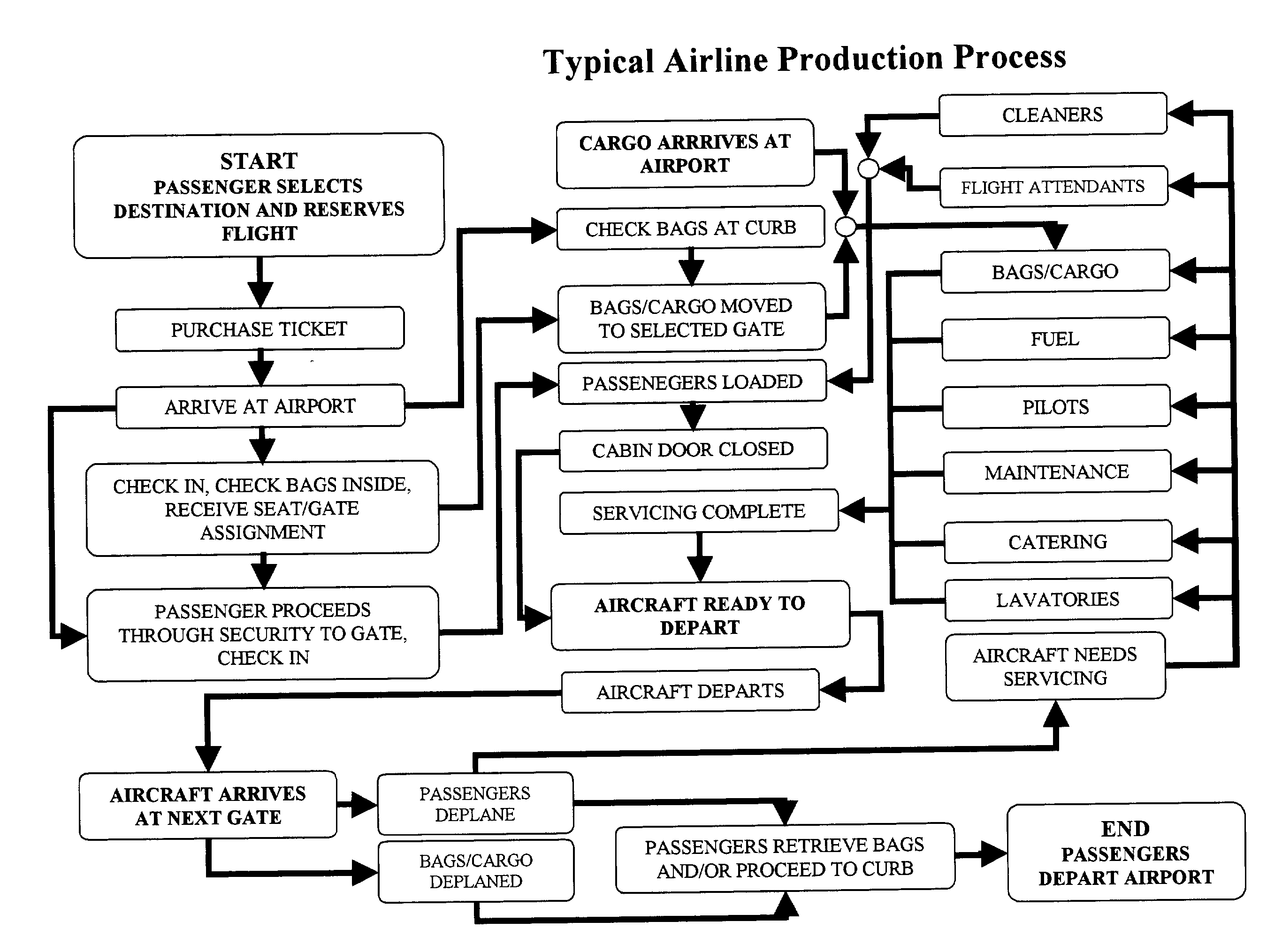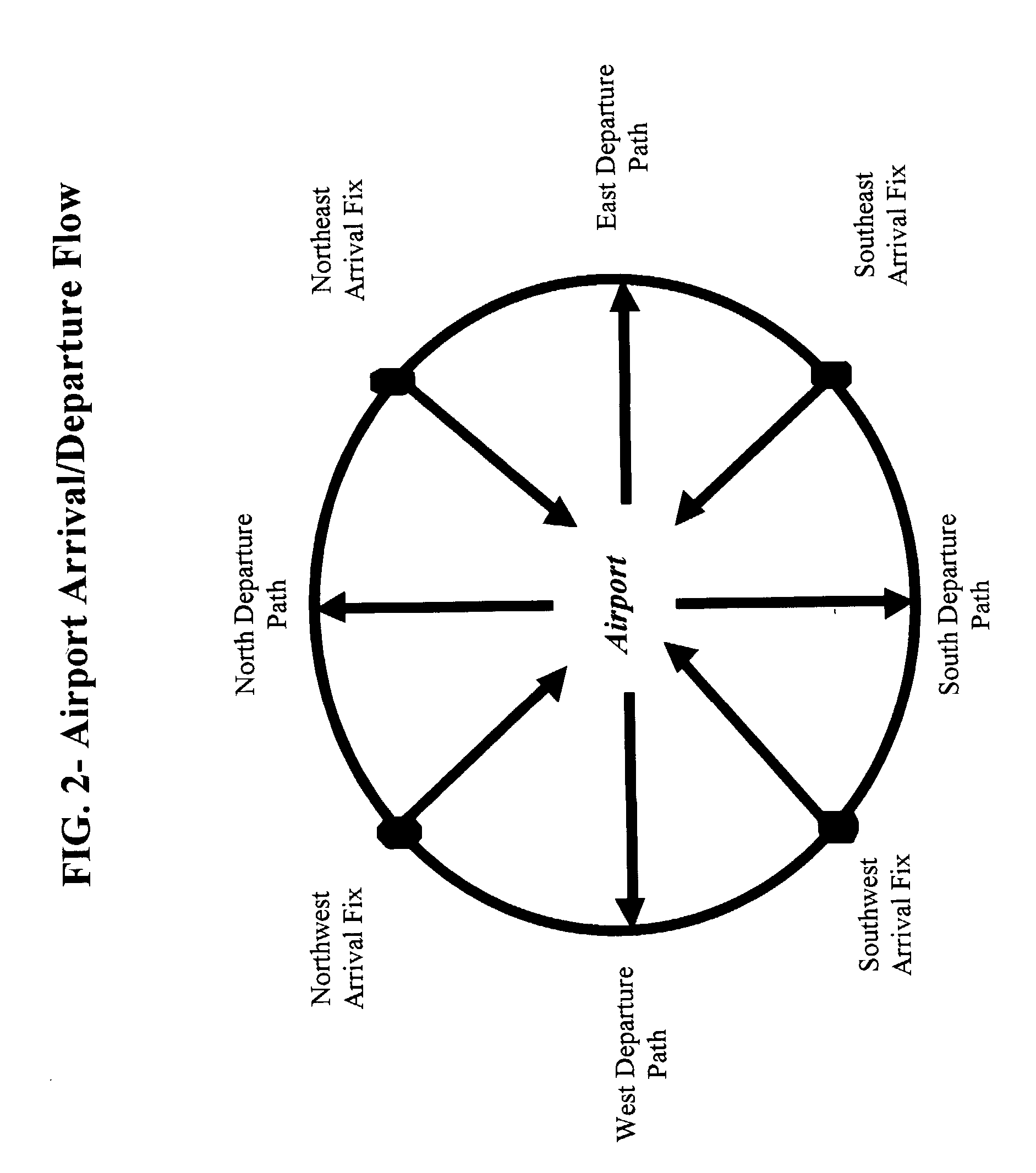Method and system for tracking and prediction of aircraft trajectories
a technology for aircraft and trajectories, applied in direction finders using radio waves, navigation instruments, instruments, etc., can solve the problems of not addressing the present and future movement of aircraft and other aviation assets, limiting the arrival/departure speed of all aircraft, and affecting the accuracy of aircraft trajectories
- Summary
- Abstract
- Description
- Claims
- Application Information
AI Technical Summary
Problems solved by technology
Method used
Image
Examples
example 2
[0127] Example 2--One of the unique elements of the present invention is the concept of long or multi-segment trajectories. This involves the consideration of many factors and allows the present invention to predict potential problems in a future segment of a flight prior to or several flight segments before the future problematic segment.
[0128] To better understand this concept, it is instructive to first work backward to determine why an assumed problem occurred (e.g., a late RDU departure on a flight going to ORD). In this example, the aircraft that is to fly RDU to ORD departed ORD late on its way to RDU and was delayed enroute by weather. Looking farther back in time, the ORD late departure was caused by a late departure and arrival of the aircraft from MSP to ORD. And the late MSP departure was caused by the late arrival of the crew the previous evening who needed adequate crew rest for safety reasons.
[0129] Turning this around to a forward looking prediction process, see FIG....
example 5
[0134] Example 5--Given the increased reliability of predicted aircraft arrival / departure times and the identification of unworkable constraints imposed by system resources, the process of the present invention helps the airlines / users / pilots to more efficiently sequence the ground support assets such as gates, fueling, maintenance, flight crews, etc.
[0135] While this optimization process can be done manually, an automated system encompassing a multidimensional Goal Function, as found in the inventors' Regular application Ser. No. 09 / 549074, would more rapidly provide a more accurate global solution to the arrival / departure prediction thus allowing for the improvement of the current operation at a reduced cost.
[0136] Example 6--Some trajectories will actually never show an arrival at the intended destination. For example, if while the aircraft was in flight and the pilot accepted or was given a flight path that exceeded the parameters of the aircraft (i.e., not enough fuel), the pil...
PUM
 Login to View More
Login to View More Abstract
Description
Claims
Application Information
 Login to View More
Login to View More - R&D
- Intellectual Property
- Life Sciences
- Materials
- Tech Scout
- Unparalleled Data Quality
- Higher Quality Content
- 60% Fewer Hallucinations
Browse by: Latest US Patents, China's latest patents, Technical Efficacy Thesaurus, Application Domain, Technology Topic, Popular Technical Reports.
© 2025 PatSnap. All rights reserved.Legal|Privacy policy|Modern Slavery Act Transparency Statement|Sitemap|About US| Contact US: help@patsnap.com



